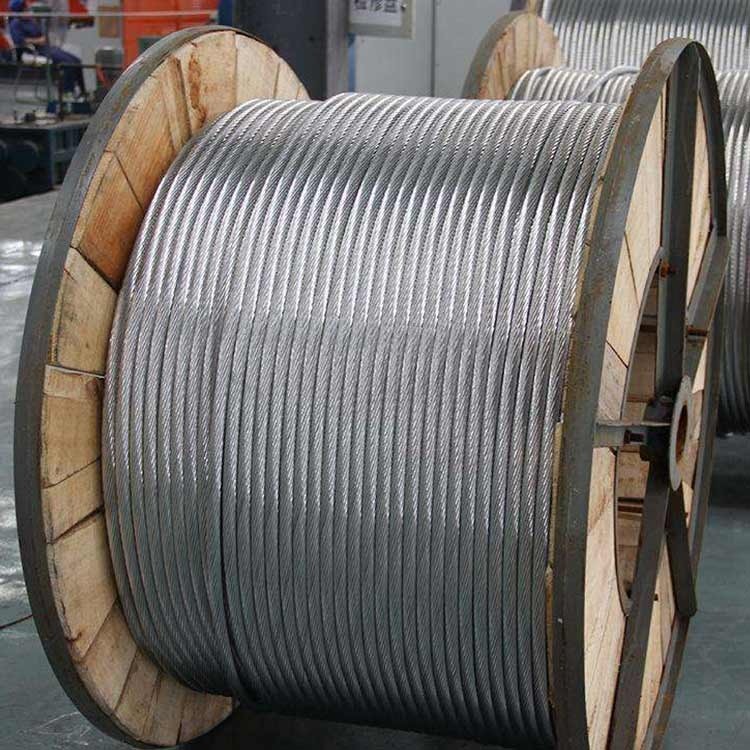
For aluminum stranded conductor DC resistance measurement, many companies also made a lot of research on PVC cables. In GB3048, the resistance measurement of the distance and the current terminal voltage terminal, measuring the current size and so made the provisions. Eligible single line with a normal process for stranded wire core, in the actual measurement, can still explore issues such as the impact of potential side shape of the measurement results, the key point of the four-terminal method to measure the resistance, and how to measure the current of uniform. I raised this question over the following views.
1. Single-stranded and stranded cores have a range of resistance values.
With twisted core insulation between every single line, the current flow is along a single line into a spiral, and all single-wire line cores are reliable and current lead-in phase. 1m long strands in the calculation of the length of the layers expand, according to the parallel resistance formula to calculate the stranded DC resistance formula such as:
Still exist between the actual core of the single-wire twisted certain conductance, conductance size, and circumstances of the monofilament surface. Conductance core in the presence of DC incomplete spiral flow along a single line, a part of the current is flowing axially along the filament. At this time is smaller than the current core DC resistance completely along those filaments into a spiral flow. Because stranded aluminum wires after the resistance had no significant changes in the singlet under qualified, even after taking into account the core into a 1% increase in the length of the cable, twisted wire core resistance still has some margin.
2. Generation due to failure of measured values.
The stranded resistance failure phenomenon occurs because all the resistance measurements failed to uniformly measure the current flowing through the specimen.
All monofilament core reliably and current lead-in phase, and the line between the core filaments insulated current flowing along the filaments into a spiral. So in the same filament diameter, homogeneous case, the sample perpendicular to the section line should be the core and other planes, in between the filaments of the section the potential difference is zero. In the allelic case, the potential difference between the voltage at the terminal will not shape the voltage clamp, the way contact with the sample surface changes and changes the pressing force of the sample.
Currently stranded resistance measuring jig shape much like a knife-shaped and bounded by tightening the bolts on the sample to generate pressure. Due to the presence of aluminum monofilament surface oxide film, when measuring the current through the introduction of a sample of this form jig, its current distribution is often uneven, stranding the outer filaments' current density.
This phenomenon increases with the cross-section stranded seriously. V-type current clamp is less than knife-like, the annular current folder has a greater improvement, but does not allow the current to achieve the desired homogeneous state.
Uneven distribution measuring current to voltage terminal 1m apart two of the voltage difference is greater than the current uniform measuring the voltage difference between two voltage terminal. In this case, the shape of the voltage terminal clamps, and pressure for closer improvements are often not effective. Therefore, the key to solving the problem is how to measure the resistance by measuring current and voltage terminal clamps' uniform requirements, which can measure the current uniform fall from the sky at the end.
3. Solution.
In order to make the internal current uniform core sample can be taken to deal with the end. The processing method is the use of welding ends and trying to make the current terminal with wire core weld close. With this method, there are still some problems.
In addition to welding, as well as the ends of the aluminum nose cold pressure welding method, this method can measure the current uniform simple and effective way to achieve well. For current uniformity, the leading end of the sample must be reduced contact resistance. A compression type of bolt tightening method is small.
Compression-type contact resistance is several microns to ten several microns Euro in Europe, and clamp-on current terminal contact resistance of the sample is several tens to one hundred micro-ohms XLPE cable. Using the cold pressure welding method, measuring the current from the aluminum nose directly introduced can better overcome the presence of the oxide film between monofilament current distribution uneven.
Aluminum stranded conductor resistance measurement method to solve, for power cable products, can make a fair assessment, accurate measurement of the resistance of the enterprise to reduce the filament diameter, conservation of raw materials, provide an important basis for process improvements, this aspect is concerned, more practical significance.